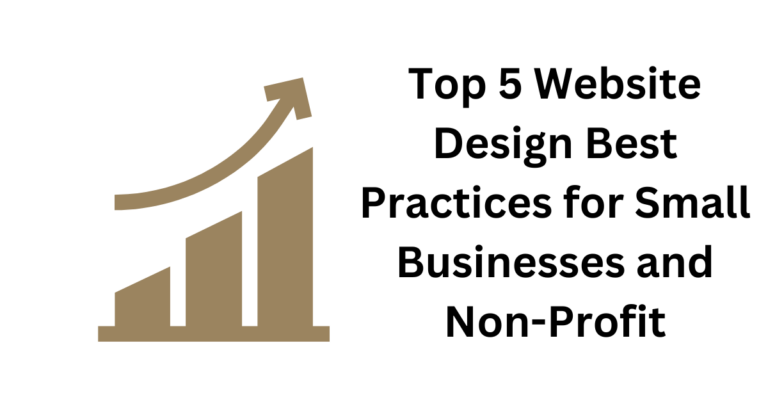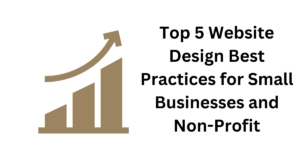- Introduction
- The Role of a Website in Building an Online Presence
- The Importance of a Well-Designed Website
- How a Well-Designed Website Boosts Online Presence
- Affordable Website Design Solutions for Small Businesses and Non-Profits
- Conclusion
- Are you a small business owner or non-profit organization looking to make a powerful impact online?
Introduction
In today’s digital landscape, your website is more than just an online brochure—it’s the foundation of your online presence. Whether you’re a small business owner, a startup founder, or running a non-profit organization, a well-designed website can be the catalyst that propels your brand into the spotlight. A well-designed website is crucial in establishing a strong online presence that drives traffic, engagement, and ultimately, growth. According to recent studies, 75% of online visitors judge a company’s credibility based on its website design. This fact alone underscores the importance of investing in a well-designed website. But what exactly makes a website “well-designed,” and how does it contribute to boosting your online visibility?
This blog post will explore the critical elements of website design that can enhance your brand’s online presence, engage your audience, and ultimately drive growth.
“Your website is your digital storefront. Make sure it’s making the right impression.”
The Role of a Website in Building an Online Presence
1. Central Hub for All Online Activities
Your website serves as the central hub for all your online visibility efforts. It’s where your social media, email campaigns, and newsletters, provide a unified platform for your audience to engage with your brand. A consistent and well-organized website ensures that visitors can easily find the information they’re looking for, whether they’ve arrived via a social media post, an email link, or a Google search.
2. First Impressions Matter
Did you know that it takes only 0.05 seconds for users to form an opinion about your website? That’s right—less than a second! A professional, well-designed website can make the difference between a visitor staying to explore further or leaving immediately. Elements like clean layouts, easy navigation, and high-quality images all contribute to making a strong first impression.
The Importance of a Well-Designed Website
A well-designed website is not just about aesthetics; it’s about creating a user experience (UX) that leaves a lasting impression on your visitors. First impressions matter, and in the digital world, your website is often the first interaction potential customers have with your brand. A site that is visually appealing, easy to navigate, and mobile-responsive can establish credibility and professionalism, which are crucial for small businesses and startups.
1. Establishing Credibility and Trust
A well-designed website signals to visitors that your business is legitimate and trustworthy. This is especially important for small businesses and non-profits that rely on building relationships with their audience. Features like clean layouts, consistent branding, and professional-quality images contribute to a sense of reliability.
For non-profit organizations, a user-friendly website can make it easier for visitors to find information, learn about your mission, and make donations, which directly impacts your ability to fulfill your goals.
2. Enhancing User Experience (UX)
User experience is a critical aspect of web design. A site that is difficult to navigate or slow to load will frustrate users, leading to high bounce rates and missed opportunities for engagement. By focusing on UX design, you ensure that your website is intuitive, making it easy for visitors to find what they need without hassle.
A well-structured website not only keeps users engaged but also encourages them to explore more pages, increasing the likelihood of conversions, whether that means making a purchase, signing up for a newsletter, or contacting you for more information.
3. Increase Website Conversion Rates and Call-to-Actions (CTAs)
A well-designed website is also a powerful tool for driving conversions. Whether your goal is to increase sales, generate leads, or encourage donations, your website’s design can guide users toward taking action.
Effective CTAs, strategically placed throughout your site, can significantly boost your conversion rates. Make sure your CTAs stand out and are easy to find, whether it’s a “Buy Now” button, a newsletter sign-up form, or a donation link.
How a Well-Designed Website Boosts Online Presence
A well-designed website does more than just look good—it plays a crucial role in improving your online presence by boosting your search engine rankings, increasing website traffic, and enhancing user engagement.
1. Search Engine Optimization (SEO) and Website Design
“Integrating SEO best practices into your website design is essential for improving your site’s visibility on search engines like Google.”
By implementing SEO best practices, your website can improve its site’s visibility on search engines, driving more organic traffic to your site. Search engine optimization (SEO) should be a key consideration in any website design process. Implementing SEO best practices in addition to a well-structured website with clean code can significantly impact search engine rankings.
SEO Best Practices:
- Site Structure: Use a logical structure with clear headings and subheadings to help search engines understand your content.
- Metadata: Include relevant keywords in your meta titles, descriptions, and alt tags.
- Internal Linking: Use internal links to guide users to related content and improve SEO.
2. Responsive Design for Mobile Users
With a growing number of users accessing websites via smartphones and tablets, having a mobile-responsive design is no longer optional—it’s a necessity. A mobile-friendly website ensures that your content looks great and functions well on all devices, which is crucial for maintaining a positive user experience and keeping visitors on your site longer.
Google’s algorithm favors mobile-responsive sites, so optimizing your site for mobile devices can give you an edge over competitors who haven’t leaped responsive design.
3. User-Friendly Navigation
If visitors can’t find what they’re looking for quickly, they’re likely to leave your site. User-friendly navigation is crucial for keeping visitors engaged and reducing bounce rates. Your content should be organized logically and be clear. Descriptive menu labels make it easy for your visitors to find what they need.
4. Fast Loading Times
Speed is a critical factor in website performance. Research shows that 53% of mobile users abandon a site that takes longer than three seconds to load. A slow website can frustrate users and harm your search engine rankings. Ensure your website loads quickly to keep visitors engaged and reduce bounce rates.
5. Engaging Content and Visual Appeal
Content is king, but it’s only as effective as the design that presents it. High-quality, engaging content that addresses your audience’s needs and pain points, coupled with an attractive design, can significantly enhance your online presence.
Use visual elements like images, infographics, and videos to break up text and keep readers engaged. A well-designed website integrates these elements seamlessly, ensuring that they complement your content rather than distract from it.
Visual Design Strategies:
- Color Scheme: Choose a color scheme that aligns with your brand and evokes the desired emotional response.
- Typography: Use fonts that are easy to read and consistent with your brand’s voice.
- Imagery: Use high-quality images that are relevant to your content and audience.

Affordable Website Design Solutions for Small Businesses and Non-Profits
“A well-designed website doesn’t just look good—it builds trust and drives results.”
For small businesses and non-profits operating on tight budgets, achieving a professional and effective website design might seem out of reach. However, with the right approach, it’s possible to create a high-quality website without breaking the bank.
1. Leveraging Affordable Website Builders
There are numerous website builders like WordPress, Wix, and Squarespace that offer affordable, user-friendly platforms for creating professional websites. These tools provide a range of templates and customization options that can help you build a website that meets your needs and reflects your brand identity.
For non-profits, some platforms offer discounts or even free services to help you create a site that supports your mission without incurring high costs. Examples of such sites include; Google Site; Weebly; Website.com; Site 123 and Webador
2. Prioritizing Essential Features
When working with a limited budget, it’s important to focus on the features that will have the most impact on your online presence. Prioritize elements like mobile responsiveness, fast loading times, and clear navigation over more expensive, complex features that may not be necessary for your goals. Invest in high-quality content and visuals that convey your brand message effectively. Even simple designs can be highly effective if the content is strong and the user experience is seamless.
3. Seeking Professional Help When Necessary
While DIY website builders are a great option for those on a budget, there are times when professional help is necessary, especially for more complex needs like custom coding or advanced SEO strategies. Hiring a web designer or working with a digital agency can be a worthwhile investment, ensuring that your website is both functional and optimized for success.
Look for professionals who understand the unique needs of small businesses and non-profits, and who can work within your budget to deliver the best possible results.
Conclusion
A well-designed website is a cornerstone of a strong online presence, especially for small businesses, startups, and non-profits. By focusing on key elements such as user experience, mobile responsiveness, and SEO, you can create a website that not only attracts visitors but also converts them into loyal customers or supporters.
Investing in a well-designed website may require time and resources, but the payoff in terms of brand awareness, customer engagement, and online growth is well worth it. Whether you’re building your site from scratch or looking to improve an existing one, the strategies discussed in this blog post will help you stand out in the crowded digital landscape.
Are you a small business owner or non-profit organization looking to make a powerful impact online?
If you’re ready to take your online presence to the next level, consider consulting with D-solutions, an Expert Website Design Services for Small Businesses and Non-Profits. Learn more about how we can help you grow your online presence.






